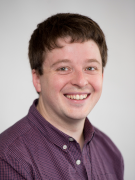Line intensity mapping is a relatively new observational technique that seeks to map out the 3D structure of the Universe using low angular resolution spectroscopic instruments. Intensity mapping with the 21cm line of neutral hydrogen is a particularly popular approach, as it allows such maps to be made over a truly vast redshift range, spanning from the local Universe all the way back to the cosmic Dark Ages. In this talk I will try to appease both observers and theorists, by reviewing some of the exciting applications of forthcoming large 21cm intensity mapping surveys while also giving an overview of the systematics challenges they face. I will particularly focus on an ongoing "autocorrelation" survey with MeerKAT, a 64-dish radio telescope in South Africa that is a precursor to the Square Kilometre Array, before turning to future prospects for constraining dark energy models with gigantic arrays (10,000's of dishes).

Please join via Zoom at
https://uio.zoom.us/j/65986339172?pwd=L2NEOVFtVCs0cjk5Vndnbm54cHdTUT09
Meeting ID: 659 8633 9172
Passcode: 607983
Attendees will be muted during the colloquium, but will have the opportunity to ask questions at the end by clicking on the "raise hand” button (or send a request via chat).
